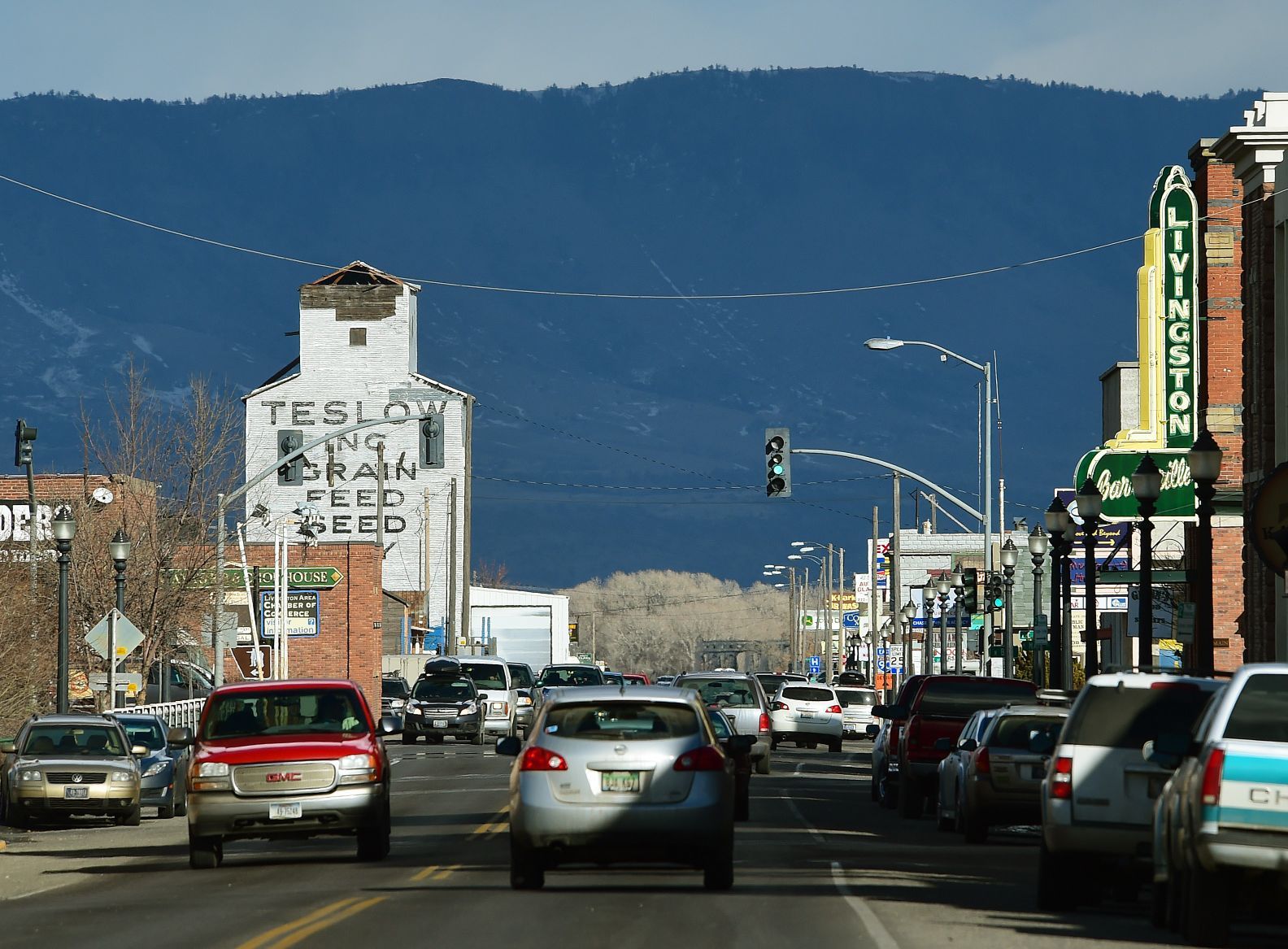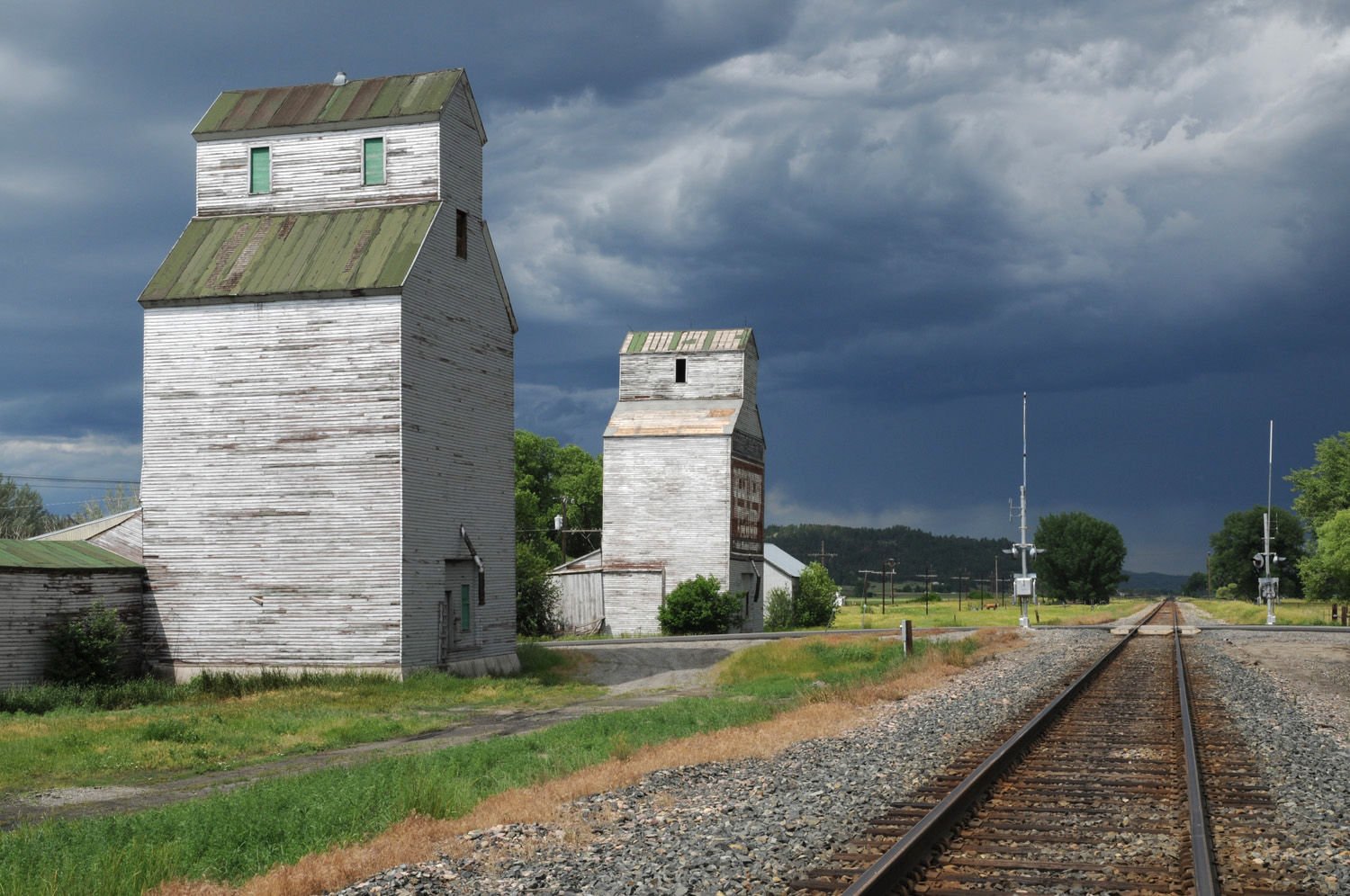Welcome to DU!
The truly grassroots left-of-center political community where regular people, not algorithms, drive the discussions and set the standards.
Join the community:
Create a free account
Support DU (and get rid of ads!):
Become a Star Member
Latest Breaking News
Editorials & Other Articles
General Discussion
The DU Lounge
All Forums
Issue Forums
Culture Forums
Alliance Forums
Region Forums
Support Forums
Help & Search
Montana
Related: About this forumLivingston bucks trend as grain elevators fall across Montana
Livingston bucks trend as grain elevators fall across Montana
By JORDON NIEDERMEIER jniedermeier@billingsgazette.com
Updated 22 hrs ago

LARRY MAYER/Gazette Staff
Livingston's Teslow grain elevator, which had been slated for demolition, will continue to stand after a group presented a plan to buy the building at a last-minute meeting Monday night.
Across Montana, small-town skylines are dominated by, or in many cases solely consist of, decades-old grain elevators in various states of disrepair.
Some of the elevators still operate, helping farmers send crops to market. Others held their last grain decades ago, and as they deteriorate they become financial and legal burdens. Elevators in Laurel, Columbus and Wilsall recently were toppled.
Preparation began this week for the demolition of the iconic Teslow Inc. grain elevator in Livingston, but the building has new hope after a grassroots preservation group called a last-minute meeting Monday night.
The group, Save the Teslow, reached a tentative agreement with current owner and local real estate developer Chris Salacinski, who took possession of the building in January. Barclay Rogers, a local lawyer and member of the community-based effort, said the short-notice meeting was well attended and a success by any measure.
....
Photos: Montana grain elevators
Bruce Selyem has made a hobby of photographing grain elevators all over the country. He shared these photos of elevators across Montana. View more of his photos, plus calendars and books, on his website, www.grainelevatorphotos.com.

Bruce Selyem
InfoView thread info, including edit history
TrashPut this thread in your Trash Can (My DU » Trash Can)
BookmarkAdd this thread to your Bookmarks (My DU » Bookmarks)
2 replies, 2063 views
ShareGet links to this post and/or share on social media
AlertAlert this post for a rule violation
PowersThere are no powers you can use on this post
EditCannot edit other people's posts
ReplyReply to this post
EditCannot edit other people's posts
Rec (4)
ReplyReply to this post
2 replies
 = new reply since forum marked as read
Highlight:
NoneDon't highlight anything
5 newestHighlight 5 most recent replies
= new reply since forum marked as read
Highlight:
NoneDon't highlight anything
5 newestHighlight 5 most recent replies
Livingston bucks trend as grain elevators fall across Montana (Original Post)
mahatmakanejeeves
Feb 2016
OP
HassleCat
(6,409 posts)1. The sadness of doomed buildings
I hate to see old buildings left to deteriorate. My first instinct is to buy the structure and fix it up. (I actually did this with two houses.) The grain elevators are remarkable because they stand above the surrounding land in a dramatic way. Of course, there is no care or maintenance, so they will eventually have to be knocked down. It's too bad when you think of all the effort it took to build them in the first place, in the days when most of the work was done by carpenters with hand tools.
mahatmakanejeeves
(60,923 posts)2. I know what you mean.
These buildings have no doubt been photographed as part of the HABS/HAER project.
Historic American Buildings Survey/Historic American Engineering Record/Historic American Landscapes Survey

Chapline Street Row Historic District. Mark L. Hall, Ed Freeman, ca. 1976.
About the Historic American Buildings Survey/Historic American Engineering Record/Historic American Landscapes Survey
The Historic American Buildings Survey (HABS) and the Historic American Engineering Record (HAER) collections are among the largest and most heavily used in the Prints and Photographs Division of the Library of Congress. Since 2000, documentation from the Historic American Landscapes Survey (HALS) has been added to the holdings. The collections document achievements in architecture, engineering, and landscape design in the United States and its territories through a comprehensive range of building types, engineering technologies, and landscapes, including examples as diverse as the Pueblo of Acoma, houses, windmills, one-room schools, the Golden Gate Bridge, and buildings designed by Frank Lloyd Wright. Administered since 1933 through cooperative agreements with the National Park Service, the Library of Congress, and the private sector, ongoing programs of the National Park Service have recorded America's built environment in multiformat surveys comprising more than 556,900 measured drawings, large-format photographs, and written histories for more than 38,600 historic structures and sites dating from Pre-Columbian times to the twentieth century. This online presentation of the HABS/HAER/HALS collections includes digitized images of measured drawings, black-and-white photographs, color transparencies, photo captions, written history pages, and supplemental materials. Since the National Park Service's HABS, HAER and HALS programs create new documentation each year, documentation will continue to be added to the online collections. The first phase of digitization of the Historic American Engineering Record collection was made possible by the generous support of the Shell Oil Company Foundation.

Chapline Street Row Historic District. Mark L. Hall, Ed Freeman, ca. 1976.
About the Historic American Buildings Survey/Historic American Engineering Record/Historic American Landscapes Survey
The Historic American Buildings Survey (HABS) and the Historic American Engineering Record (HAER) collections are among the largest and most heavily used in the Prints and Photographs Division of the Library of Congress. Since 2000, documentation from the Historic American Landscapes Survey (HALS) has been added to the holdings. The collections document achievements in architecture, engineering, and landscape design in the United States and its territories through a comprehensive range of building types, engineering technologies, and landscapes, including examples as diverse as the Pueblo of Acoma, houses, windmills, one-room schools, the Golden Gate Bridge, and buildings designed by Frank Lloyd Wright. Administered since 1933 through cooperative agreements with the National Park Service, the Library of Congress, and the private sector, ongoing programs of the National Park Service have recorded America's built environment in multiformat surveys comprising more than 556,900 measured drawings, large-format photographs, and written histories for more than 38,600 historic structures and sites dating from Pre-Columbian times to the twentieth century. This online presentation of the HABS/HAER/HALS collections includes digitized images of measured drawings, black-and-white photographs, color transparencies, photo captions, written history pages, and supplemental materials. Since the National Park Service's HABS, HAER and HALS programs create new documentation each year, documentation will continue to be added to the online collections. The first phase of digitization of the Historic American Engineering Record collection was made possible by the generous support of the Shell Oil Company Foundation.